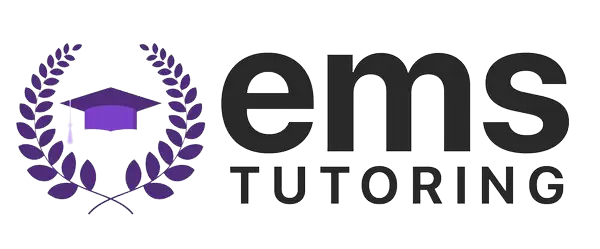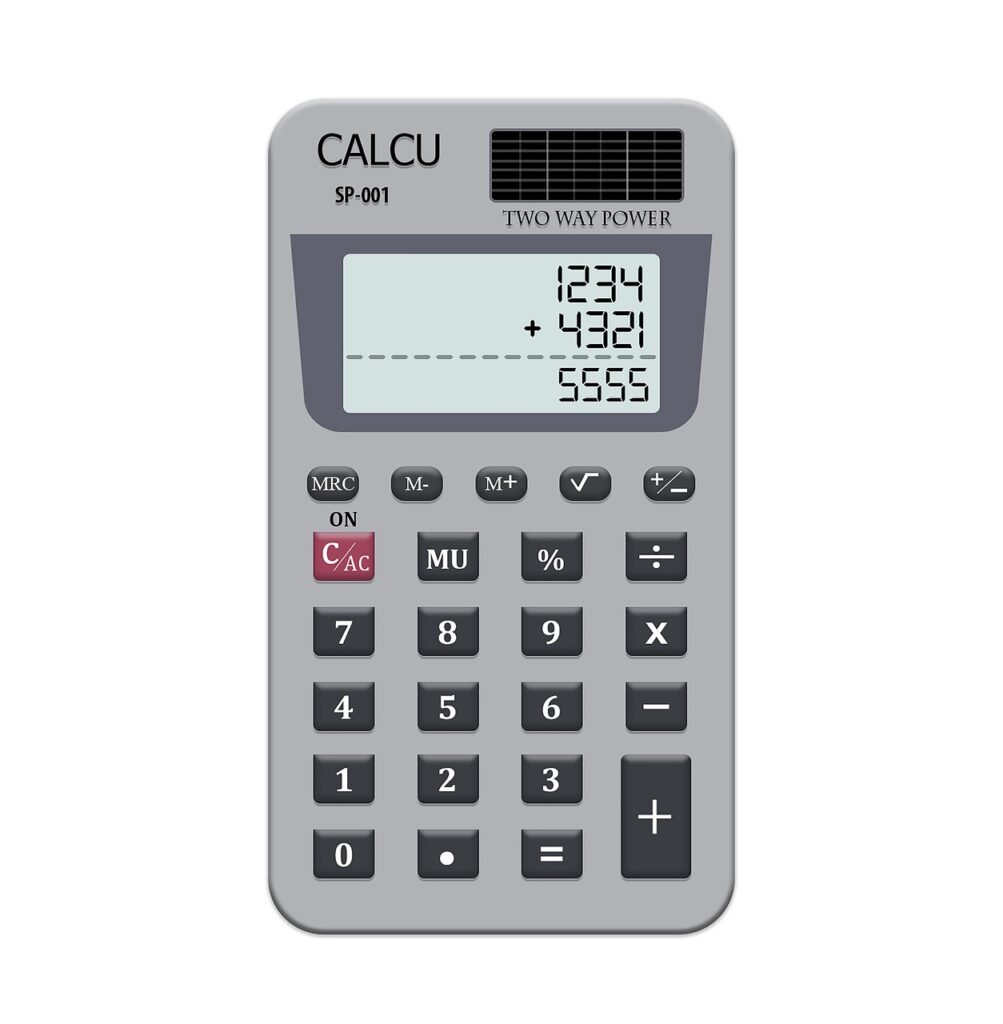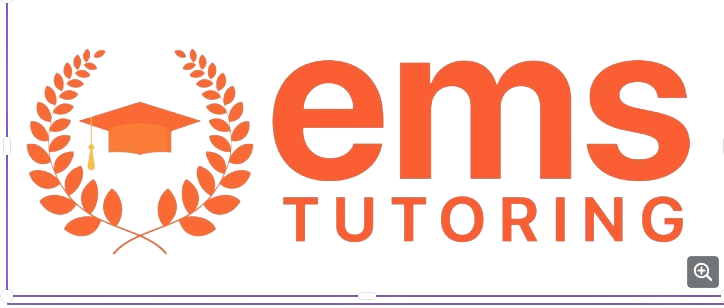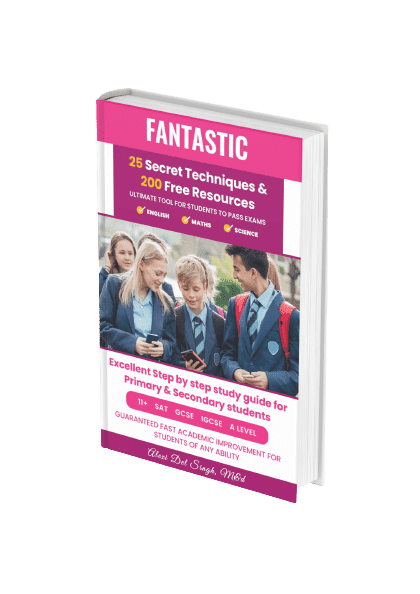In the world of mathematics education, statistics plays a vital role in equipping students with the necessary skills to analyze and interpret data. From GCSE Maths to Algebra, Geometry, and Trigonometry, students are introduced to the fundamentals of statistics alongside other mathematical concepts. With a focus on practice questions, revision tips, and exam techniques, statistics education strives to empower students with the ability to think critically and apply their numeracy skills effectively. Through online learning platforms, educational technology, and past papers, students can now enhance their understanding of statistics while developing invaluable problem-solving and time management skills. So whether you’re a student seeking to conquer exam anxiety or a tutor aiming for tutoring success, mastering statistics is the key to unlocking your mathematical potential.
Importance of Statistics in Mathematics Education
Understanding the role of statistics in math education
Statistics plays a crucial role in mathematics education, providing students with valuable tools for analyzing and interpreting data. By learning statistics, students gain a deeper understanding of mathematical concepts and see how they can be applied to real-world situations. Statistics helps students make sense of the world around them by enabling them to collect, organize, analyze, and interpret data. It is essential for students to develop statistical literacy to be able to make informed decisions, evaluate claims, and solve problems in their future personal and professional lives.
Developing critical thinking skills
Statistics education promotes critical thinking skills by encouraging students to analyze and interpret data. It requires students to think critically about the validity and reliability of data, identify patterns and trends, and draw conclusions based on evidence. Through engaging with statistical problems, students learn to question assumptions, evaluate evidence, and make logical arguments. These critical thinking skills are important not only in mathematics but also in various academic disciplines and real-world contexts.
Enhancing numeracy skills
Statistics education enhances numeracy skills by providing students with opportunities to work with numbers, manipulate data, and apply mathematical concepts in practical settings. Students develop their computational skills through analyzing data, calculating measures of central tendency, interpreting graphs and charts, and performing various statistical calculations. By engaging with statistical problems, students improve their mathematical fluency, accuracy, and ability to reason quantitatively.
Preparing students for real-world applications
Statistics education prepares students for real-world applications by helping them understand and navigate the increasingly data-driven world. In today’s information age, data is everywhere, and being able to interpret and analyze data has become a valuable skill in various domains, such as business, healthcare, social sciences, and technology. Statistics education equips students with the knowledge and skills to gather, analyze, and interpret data to make informed decisions and solve problems in their personal and professional lives. It prepares them to be data-literate citizens who can critically evaluate information and contribute to evidence-based decision-making.
Integration of Statistics in the Curriculum
Inclusion of statistics topics in syllabi
To ensure a comprehensive mathematics education, it is crucial to include statistics topics in the curriculum. Syllabi should incorporate statistical concepts, such as data collection and interpretation, probability, descriptive statistics, inferential statistics, and statistical reasoning. By integrating these topics into the curriculum, students are exposed to the fundamental principles of statistics, enabling them to develop a solid foundation for further exploration in the field.
Linking statistics with other mathematical concepts
Integrating statistics with other mathematical concepts creates connections and reinforces learning. By linking statistics with algebra, geometry, and trigonometry, students can see the practical applications of these concepts in data analysis. For example, students can explore the relationship between variables through linear regression, apply geometric concepts to constructing and interpreting statistical graphs, or use trigonometric functions in analyzing periodic data. This interdisciplinary approach helps students develop a deeper understanding of both statistics and the interconnected nature of mathematics.
Promoting interdisciplinary learning
Statistics education can be enhanced by promoting interdisciplinary learning. By integrating statistics with other subjects, such as science, social sciences, and economics, students can apply statistical concepts in a meaningful and authentic context. For instance, students can conduct scientific experiments and analyze the resulting data, study social trends through surveys and polls, or analyze economic data to make informed financial decisions. This interdisciplinary approach not only enhances students’ understanding of statistics but also fosters their ability to apply statistical thinking across diverse disciplines.
Teaching Statistics in the Classroom
Effective teaching strategies for statistics
To effectively teach statistics, educators should employ a variety of teaching strategies. This includes a combination of direct instruction, interactive activities, problem-solving tasks, and collaborative learning experiences. By using a mix of instructional approaches, teachers can cater to different learning styles, actively engage students in the learning process, and foster a deeper understanding of statistical concepts. It is important for teachers to create a supportive and inclusive learning environment where students feel comfortable asking questions, sharing ideas, and actively participating in discussions.
Engaging students through hands-on activities
Hands-on activities are essential in teaching statistics as they allow students to apply statistical concepts in practical settings. Students can collect and analyze real-world data, conduct surveys and experiments, create graphs and charts, and interpret the results. By engaging in hands-on activities, students develop a deeper understanding of statistical concepts and their relevance in their lives. It also helps them develop important skills, such as data collection, data manipulation, and data interpretation, which are essential for statistical literacy.
Utilizing technology and educational resources
Technology plays a vital role in teaching statistics. Educators can utilize statistical software, online resources, and interactive tools to enhance students’ learning experiences. Statistical software allows students to analyze large datasets, perform complex calculations, and visualize data in various formats. Online resources provide access to tutorials, interactive simulations, and practice exercises that reinforce statistical concepts. By incorporating technology and educational resources, educators can create dynamic and interactive learning environments that foster students’ interest in statistics and promote deeper learning.
Addressing common misconceptions in statistics
Statistics education must address common misconceptions that students may have. This includes misconceptions related to probability, sampling, correlation, causation, and statistical significance. To address these misconceptions, educators can use examples, real-world applications, and hands-on activities that challenge students’ understanding and promote critical thinking. It is important to create opportunities for students to reflect on their misconceptions, confront alternative viewpoints, and revise their understanding based on evidence and logical reasoning.
Assessment and Evaluation in Statistics Education
Designing appropriate assessment methods
In statistics education, it is important to design appropriate assessment methods that measure students’ understanding of statistical concepts and their ability to apply statistical techniques. This can include a combination of written tests, projects, data analysis tasks, and oral presentations. Assessments should be aligned with the learning objectives and provide a comprehensive view of students’ statistical knowledge and skills. It is essential to use a variety of assessment methods to capture students’ diverse strengths and challenges in statistics.
Measuring statistical knowledge and skills
Assessments should measure not only students’ statistical knowledge but also their ability to apply statistical skills in real-world settings. This includes their ability to collect and organize data, select appropriate statistical techniques, perform calculations accurately, interpret results, and draw meaningful conclusions. By measuring both knowledge and skills, educators can gauge students’ overall competence in statistics and identify areas for further improvement and development.
Developing valid and reliable statistical tests
To ensure fair and accurate assessments, statistical tests must be designed to be valid and reliable. Validity refers to the extent to which a test measures what it is intended to measure. In the context of statistics education, validity involves ensuring that assessments measure students’ understanding of statistical concepts and their ability to apply statistical techniques accurately. Reliability refers to the consistency and stability of test scores. Reliable statistical tests produce consistent results over time and across different raters or evaluators. By developing valid and reliable statistical tests, educators can obtain meaningful and trustworthy assessments of students’ learning in statistics.
Supporting Students in Statistics Learning
Identifying and addressing learning difficulties
In statistics learning, it is important to identify and address students’ learning difficulties early on. Educators should closely monitor students’ progress, provide regular feedback, and offer additional support to students who are struggling. This can include one-on-one tutoring, targeted interventions, or differentiated instruction to meet students’ individual needs. By identifying and addressing learning difficulties, educators can empower students to overcome challenges and develop their statistical literacy.
Providing individualized tutoring and support
Individualized tutoring and support can be highly effective in addressing students’ specific needs in statistics learning. By providing personalized instruction, educators can tailor their teaching strategies and materials to match students’ interests, learning styles, and pace of learning. Individualized tutoring can provide students with additional practice, clarification of concepts, and targeted guidance to strengthen their understanding and skills in statistics. This personalized approach can help students build confidence and overcome barriers to success in statistics.
Promoting a growth mindset in statistics
Promoting a growth mindset is crucial in statistics education. A growth mindset encourages students to believe in their ability to learn and improve in statistics through effort, perseverance, and resilience. Educators should emphasize that statistical knowledge and skills can be developed through practice, feedback, and revision. By fostering a growth mindset, educators can empower students to embrace challenges, persist in the face of setbacks, and view mistakes as opportunities for learning and growth. This mindset shift can positively impact students’ motivation, engagement, and achievement in statistics.
Practical Applications of Statistics in Daily Life
Understanding statistical data in the media
Statistics play a significant role in the media, shaping public opinion and influencing decision-making. It is essential for individuals to understand and critically evaluate statistical data presented in news articles, advertisements, and reports. Statistics education equips individuals with the skills to recognize biased or misleading statistics, question sample sizes and sources of data, interpret confidence intervals and margins of error, and consider alternative explanations. This enables individuals to make informed decisions, challenge misleading claims, and engage in meaningful discussions based on accurate and reliable statistical information.
Analyzing real-world problems using statistical methods
Statistics provides individuals with the tools to analyze and solve real-world problems. Whether it is predicting trends, conducting surveys, analyzing medical data, or making financial decisions, statistical methods are integral to understanding and addressing complex issues. By applying statistical techniques, individuals can identify patterns, test hypotheses, make predictions, and evaluate the effectiveness of interventions. Statistics education empowers individuals to navigate the complexities of the modern world and make evidence-based decisions to improve outcomes in various domains.
Making informed decisions based on statistical findings
In today’s data-driven society, the ability to make informed decisions based on statistical findings is crucial. Statistics education enables individuals to critically analyze data, consider alternative explanations, and evaluate the validity and reliability of statistical evidence. It equips individuals with the skills to assess risks and benefits, evaluate the effectiveness of interventions, and make choices that have a positive impact on their lives and society. By making informed decisions, individuals can improve their personal well-being, contribute to societal progress, and advocate for evidence-based policies.
Professional Development for Statistics Educators
Training and workshops for teachers
Professional development opportunities, such as training and workshops, are essential for statistics educators to enhance their knowledge, skills, and instructional practices. These opportunities provide educators with the latest research findings, best practices in statistics education, and innovative teaching strategies. By participating in professional development, educators can deepen their understanding of statistics, stay updated with advancements in the field, and continuously improve their teaching methods. This, in turn, benefits students by ensuring high-quality instruction and promoting their learning outcomes in statistics.
Keeping up with advancements in statistics education
Advancements in statistics education, such as new technologies, pedagogical approaches, and curriculum developments, are continually emerging. Statistics educators need to stay informed and keep up with these advancements to provide students with the best possible learning experiences. Staying updated can involve reading research articles, attending conferences and webinars, joining professional organizations, and engaging in online communities of practice. By actively seeking professional growth, statistics educators can cultivate their expertise, enhance their instructional practices, and effectively prepare students for the ever-evolving field of statistics.
Networking and collaboration opportunities
Networking and collaboration opportunities are valuable for statistics educators to connect with colleagues, share ideas, and collaborate on research and instructional projects. Collaborating with other educators allows for the exchange of innovative teaching practices, the development of interdisciplinary projects, and the creation of supportive professional communities. Networking also provides a platform for statistics educators to learn from one another, seek advice, and foster a sense of camaraderie in the pursuit of excellence in statistics education.
Challenges and Solutions in Teaching Statistics
Overcoming student disinterest and lack of motivation
Teaching statistics can sometimes encounter the challenge of student disinterest and lack of motivation. To overcome this, educators can make statistics relevant and engaging by using real-world examples, demonstrating the practical applications of statistics, and connecting statistics to students’ lives and interests. By highlighting the impact of statistics on various domains, such as sports, health, finance, and social issues, educators can spark students’ curiosity and instill a sense of purpose and relevance in statistics education. Additionally, incorporating interactive activities, hands-on experiments, and collaborative projects can create a more engaging and motivating learning environment for students.
Addressing the shortage of qualified statistics teachers
The shortage of qualified statistics teachers is a significant challenge in mathematics education. To address this, educational institutions and policymakers can invest in recruiting, training, and retaining highly qualified statistics educators. This can be done through financial incentives, scholarships, mentoring programs, and targeted professional development opportunities in statistics education. Collaborative efforts between universities and schools can also help bridge the gap by establishing partnerships that provide preservice statistics teachers with practical classroom experiences and mentoring from experienced educators. By addressing the shortage of qualified statistics teachers, more students can benefit from high-quality statistics education.
Integrating statistics across different grade levels
Integrating statistics across different grade levels can be challenging due to the diverse mathematical backgrounds and developmental levels of students. To address this, a coordinated and scaffolded approach should be implemented. This involves introducing foundational statistical concepts at early grade levels, building upon them progressively, and revisiting and reinforcing these concepts throughout the curriculum. By intentionally integrating statistics at different grade levels, educators can ensure a cohesive and cumulative learning experience for students, promoting continuity and deepening understanding as students progress through their mathematics education.
Resources and Tools for Teaching Statistics
Online platforms and websites for statistics education
There are several online platforms and websites that provide resources, lesson plans, interactive simulations, and teaching materials for statistics education. These platforms offer educators access to a wide range of materials that can enhance their instructional practices and engage students in meaningful learning experiences. Some notable online platforms and websites for statistics education include the National Council of Teachers of Mathematics (NCTM), the American Statistical Association (ASA), Khan Academy, StatCrunch, and the Consortium for the Advancement of Undergraduate Statistics Education (CAUSE). These resources can support educators in planning lessons, creating assessments, and incorporating technology into their statistics instruction.
Interactive software and simulations for statistical analysis
Interactive software and simulations are valuable tools for teaching statistics. They allow students to explore data, perform calculations, and visualize statistical concepts in a dynamic and interactive manner. Software such as SPSS, Excel, R, and JMP provide students with the opportunity to analyze real-world datasets, create graphs and charts, and perform statistical calculations. Online simulations, such as those offered by the StatSim Lab or the Virtual Laboratories in Probability and Statistics, enable students to experiment with different scenarios and observe the impact of changing variables on statistical outcomes. These tools enhance students’ statistical literacy and provide a hands-on approach to learning statistics.
Books, textbooks, and educational materials
Books, textbooks, and educational materials are essential resources for teaching statistics. They provide educators with comprehensive content, curriculum frameworks, sample problems, and teaching strategies. Statistics textbooks, such as “The Practice of Statistics” by Starnes, Tabor, and Yates, or “Understanding Basic Statistics” by Charles Henry Brase and Corrinne Pellillo Brase, offer a structured approach to teaching statistics and provide students with the necessary content knowledge. Additionally, supplementary materials, such as workbooks, study guides, and test banks, support student learning and assessment. Educational publishers, such as Pearson, McGraw-Hill, and Cengage, offer a wide range of statistics resources for educators to choose from.
Future Trends in Statistics Education
Incorporating data science into the math curriculum
As the field of data science continues to grow, there is an increasing need to incorporate data science concepts and skills into the math curriculum. Data science combines statistics, computer science, and domain knowledge to extract insights from data. By integrating data science into the math curriculum, students can develop skills in data collection, data cleaning, data visualization, and data analysis using programming languages such as Python or R. This prepares students for careers in data science and equips them with the skills needed to deal with the ever-increasing volume and complexity of data in the digital age.
Advancements in educational technology for statistics
Advancements in educational technology are revolutionizing statistics education. Interactive online platforms, virtual reality simulations, and mobile applications offer students immersive and personalized learning experiences. These technologies provide opportunities for students to engage with statistics in a dynamic and interactive manner, visualize abstract concepts, and receive instant feedback on their progress. Additionally, adaptive learning software can tailor individualized instruction to students’ needs, allowing for differentiated and personalized learning. As educational technology continues to evolve, it will play an increasingly vital role in enhancing statistics education.
Developing new teaching methods and approaches
The field of statistics education is constantly evolving, and new teaching methods and approaches are being developed to enhance student learning. These include flipped classrooms, inquiry-based learning, project-based learning, and problem-based learning, among others. Flipped classrooms involve students learning content outside of class through videos or online modules and using class time for active engagement and collaborative problem-solving. Inquiry-based learning, project-based learning, and problem-based learning emphasize student exploration, problem-solving, and real-world applications of statistics. These pedagogical approaches promote active learning, critical thinking, and the development of statistical reasoning skills.
In conclusion, statistics education holds great importance in mathematics education as it enhances critical thinking skills, numeracy skills, and prepares students for real-world applications. Integration of statistics in the curriculum and effective teaching strategies are essential in promoting statistical literacy and addressing common misconceptions. Assessment methods should be designed to measure both statistical knowledge and skills, while providing individualized support and fostering a growth mindset ensures student success. Practical applications of statistics in daily life highlight the relevance of statistics in decision-making. Professional development opportunities, addressing challenges faced in teaching statistics, and utilizing resources and tools contribute to effective statistics education. The future trends of incorporating data science, advancements in educational technology, and developing new teaching methods further enhance statistics education for students’ success.










